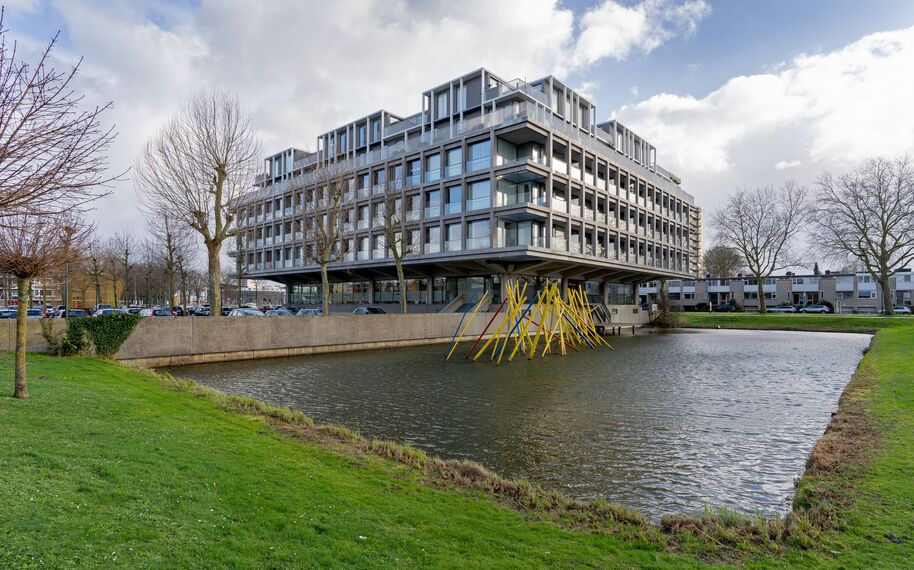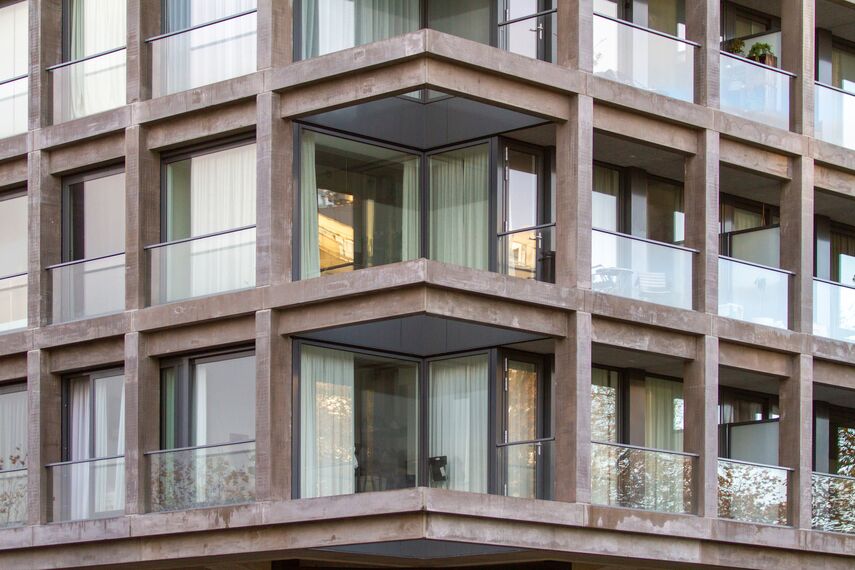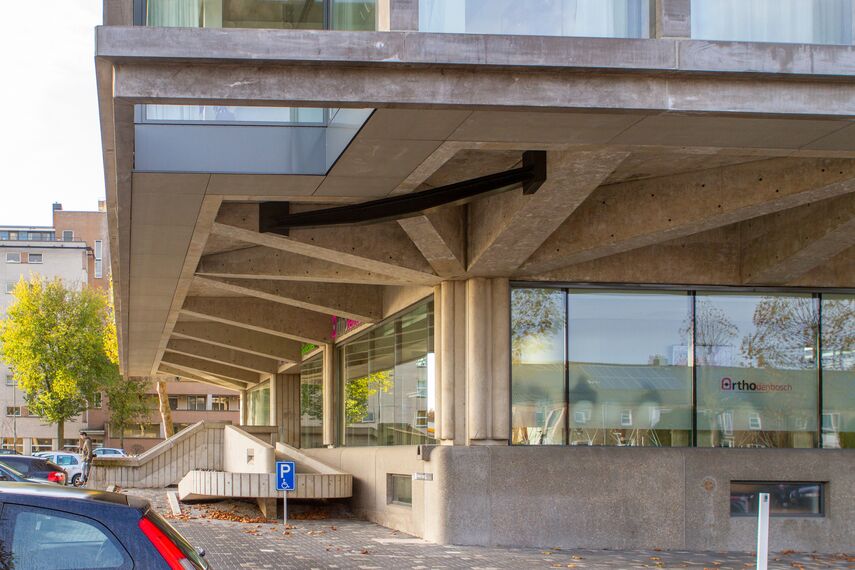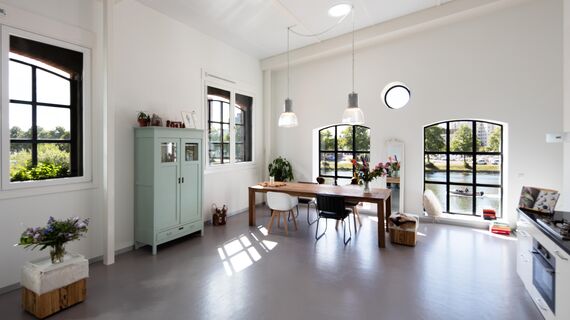- Houben / Van Mierlo Architecten
Schubert Apartments
A brutalist bastion has been transformed with smart interventions into an open and pleasant residential building that blends into the surrounding residential area. Behind a hard concrete grid is a recessed glass facade with subtle aluminum frames. A topping up with two playful staggered floors provides dynamism.
The original architecture of the Schubert residential complex in Den Bosch is a clear example of Brutalism, concrete construction from the 1960s and 1970s with its closed block structures. The Rijkswaterstaat government building was so massive that there was even talk of the construction of an atomic cellar. Still, the original 1977 design is relatively simple. The visual carrier is a hard grid of high, sloping floor elements. A characteristic feature was the three-story square structure cantilevered above a plinth. The building is also partly surrounded by a pond, which makes the appearance larger, more stately but also more distant. And then the office façade was also sealed with tinted glass. In short, there was a closed working machine made of inaccessible concrete, right in a residential area.
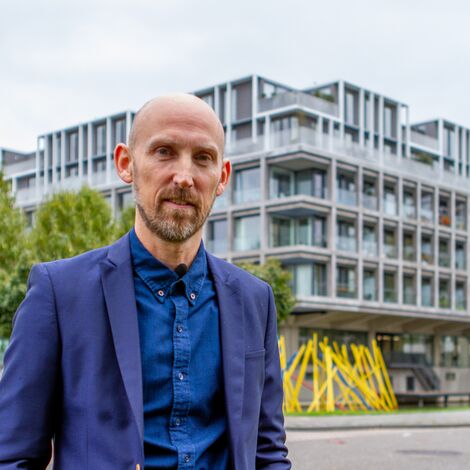
Architect Bas van Mierlo from the Houben / Van Mierlo architectural firm.
“The main intervention was to break open the facade,” says architect Bas van Mierlo of the Houben / Van Mierlo architectural firm. “For example, the horizontal facade elements for the floors have been reduced in size and covered with micro-concrete, they now have the same volume as the vertical profiles. Incidentally, they have been newly placed. This creates a strong square grid over the facade. ” The micro concrete used is smooth and has a fresh appearance.
Not only has the mirror glass been removed, but the curtain wall of the apartments has also been placed backward. The retracted glass façade is fitted with dark aluminum frames, which are minimal. “This intervention provides the facade with a transparent appearance and reduces the noise from the busy road. Outdoor space has also been added to the houses. ” The four corners of the existing architecture formed a notch in the building. Now the concrete floor profile has been extended, leaving the grid intact and creating the illusion of a literal opening in the facade. "As if we took something away instead of adding it."
Micro concrete
During the transformation, the building was completely stripped. "Only the concrete carcass of the floor and columns remained." The plinth is filled with the commercial rental and has a glass facade. Here too, a conscious choice was made for aluminum frames. "This facade must be as transparent as possible and yet self-supporting." By reducing the building mass (for instance by using lightweight micro-concrete), the building could be topped up with two extra stories without foundation correction. These differ from the imperative grid of square concrete elements. The topping-out consists of apartments finished with wood and finer white profiles in a standing rectangular grid. Because the second floor is interrupted by roof terraces, an irregularly stepped facade is created. “The complex has a great diversity of housing with apartments from 45 to 150 square meters, both for rent and sale. This is partly made visible in this way. ” A sturdy opening has been made in the load-bearing plinth for a wide staircase, which continues from ground level into the building, which enhances accessibility. “Residents are invited not to take the elevator or the anonymous stairwells, but to go to their apartment via the wide staircase and the inner garden. This stimulates encounters. The closed hollow core is now visible and open to residents and passers-by. The building explicitly seeks a connection with the surrounding residential area. ” At the rear of the building, the same wide staircase leads to a wooden platform in the pond where residents but also residents can sit. "This one faces west and takes the evening sun."
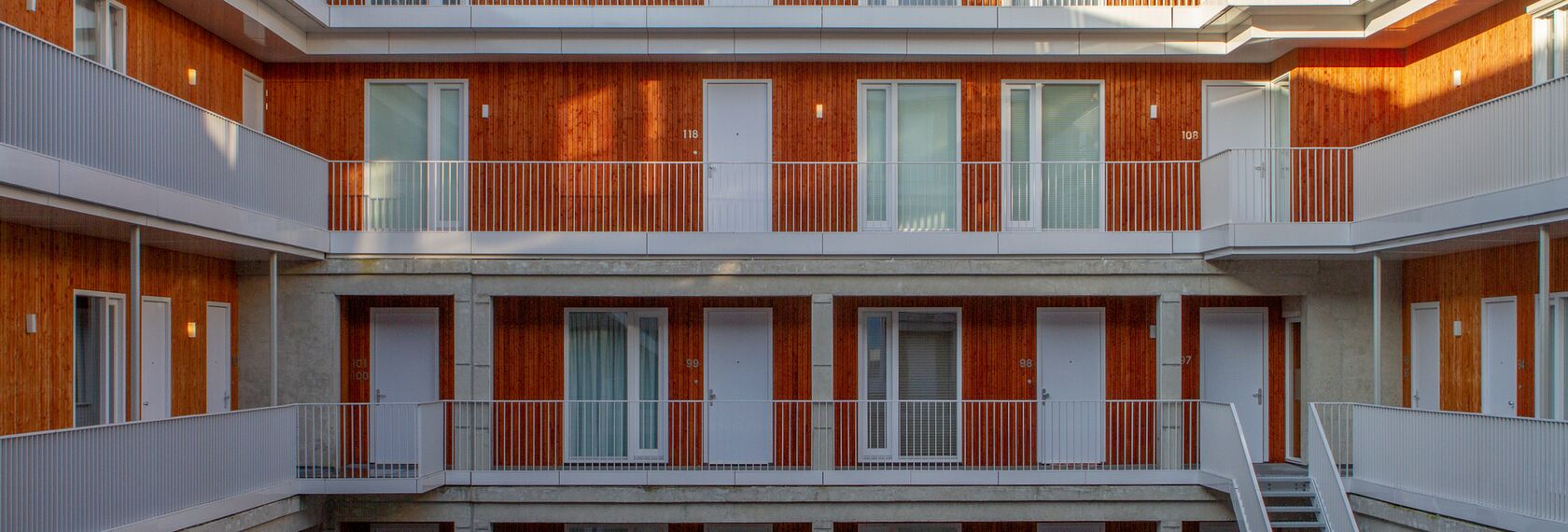
The courtyard where residents are invited to meet.
All electric
From the courtyard, you can look through the stairs to the street level. To do this, the roof of the old meeting room had to be lowered. Trees and greenery have been planted in the courtyard and informal seating areas have been placed. "It should act like a little square." The courtyard is a stark contrast to the hard exterior. The apartments have a light wooden facade. The window frames are fresh white, just like the doors, stairwells, and balustrade. The distinction between the two elevated floors and the underlying houses is almost invisible here; only the load-bearing concrete columns have been deliberately keeping visible and mark the original architecture. "Despite the very different homes, this reinforces the feeling that everyone lives in the same building." Invisible but essential is the sustainable transformation. The houses are all-electric and equipped with heat pumps, recycled or reusable materials, and lightweight micro-concrete for weight reduction. The rainwater is filtered with a delay or discharged directly to ground level. The trees around the building have been largely preserved and expanded with greenery in the courtyard. The building is therefore resistant to a second and possibly even a third life. The former office of Rijkswaterstaat has been transformed from a concrete island into a residential area into an accessible and modern residential complex. Thanks to a wide public staircase that opens up a green courtyard, the building has an open appearance. The facade has been made transparent by placing the houses deep behind the facade. The added roof houses with playful facades make the living pleasure visible. At the same time, the architecture is undiminished idiosyncratic. The glass plinth looks fragile under the cantilevered concrete construction. The no-nonsense grid of concrete looks familiar and yet exciting.
Used systems
- ConceptPatio 130
Involved stakeholders
Architect
- Houben / Van Mierlo Architecten
Fabricator
- Facédo
Photographer
- Rene de Wit

